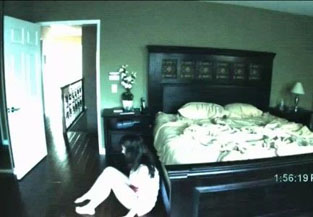Hollywood Psych: Paranormal Activity
By Sean Collier
October 19, 2009
With a small and very selective rollout – that followed the buzz for the film, instead of preceding it – DreamWorks had created a situation where supply (showtimes) didn't come close to meeting demand. When the final test run – one print and only one print showing in a few dozen mostly mid-sized markets – came along, nearly every show was filling up. Not just prime time, either – an employee I know said that last weekend, even afternoon showings on Friday were selling out. The Web site promised that if one million demands were filed on the Eventful site, a nationwide release would follow; the number was reached within a few days of the announcement.
Without this rollout, we probably wouldn't be talking about Paranormal Activity. Oddly enough, I'm reminded of the Cartmanland episode of South Park – Cartman opened a theme park, but no one was too impressed. Then he decided not to let anybody in. Suddenly, everyone wanted in. If you deny access to a product, people fight to get it. While Paranormal Activity is very good, even a very good horror movie released conventionally usually doesn't turn many heads – but DreamWorks built the interest long before they delivered the product and gave word of mouth time to work.
The lesson here is how much power word-of-mouth has. We usually regard it as a footnote – say, if a film does okay opening weekend, but is well received, it may not have a big second weekend drop due to positive word-of-mouth. But harnessed perfectly – which is tough – buzz can make millions. Keep in mind that word-of-mouth was basically the only thing Paranormal Activity had spurring it on – advertising was minimal, the actors and director were unknowns, and the plot is relatively simple – which makes it tough to sell. The film made money because people couldn't stop talking about it.
Tons of money, at that. While Paranormal Activity came in fifth in last weekend's box office race – about $8 Million from 160 theaters, good for a venue average near $50,000, and it climbed to third this weekend with a little over $20 million - stop for a moment and consider the film's budget. The highest reported figure was $15,000.
First off, that means that every screen that showed the film last weekend made the movie's money back three times over.
But more importantly, say that Paranormal Activity wraps up with a tally of $40 million (which will prove to be quite a conservative estimate.) For every dollar Oren Peli put into the film, then, he would've made $2,666.
That's a hell of an investment. It's not news that small films can be more profitable than big ones, assuming they hit – what's noteworthy about Paranormal Activity is that DreamWorks may have provided a blueprint for how a small film can get attention and make money.
A $15,000 horror film got me to drive across the state and back. (The big shocker – I didn't regret this decision, even after the movie showed up across the street six days later.) More importantly, though, it might complete change how Hollywood sells us movies.
Continued:
1
2
|
|
|
|




